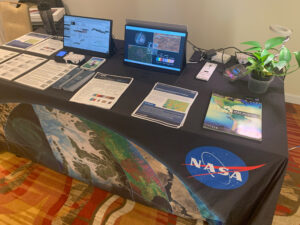Contributor: Rashmi De Roy, World Wildlife Foundation

- In 2006, the WWF helped prepare the first map of coral habitats in the southeastern Persian Gulf, highlighting some of the most extensive and biologically important coral reefs around the offshore islands and banks of the United Arab Emirate of Abu Dhabi and Qatar’s harbor.
This large scale habitat map, which is an outcome of the Coral Reef Investigations in Abu Dhabi and Eastern Qatar project, will allow resource managers to assess the quantity and quality of marine resources under their jurisdiction.
Since January 2005, threatened coral habitats of the Persian Gulf have been studied and mapped with a view to developing a comprehensive conservation and management plan for these valuable ecosystems. Alongside, researchers of participating environmental organizations in the UAE and Qatar have received training in both theoretical and practical aspects of project work.
“With the help of this coral reef map, future protection measures will be made much easier,” commented Majid Al Mansouri, Board Member of the Emirates Wildlife Society, an associate organization of WWF in the United Arab Emirates.
The map has been prepared using Landsat satellite imagery. Although ground-truthing was done at over 1,000 points for accuracy control, it is still a preliminary map that requires fine-tuning and approval from government agencies implementing the project in the UAE and Qatar. Higher resolution imagery will be used to map areas of special interest in greater detail.
“The production of this coral reef map is a vital contribution to Gulf biodiversity,” said Ahmed Al Sayegh, CEO, Dolphin Energy, a company that is implementing the Dolphin Gas Project designed to supply natural gas from offshore Qatar to the UAE.
“We will be transporting natural gas within a few months. Now that we know where the corals are located, it will be a vital part of our environment management program that these be protected in every possible way, for the benefit of future generations.”
For more information:
+ WWF press release (external link)
+ View the complete map (external link)






